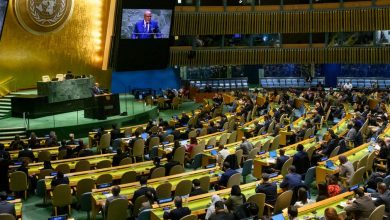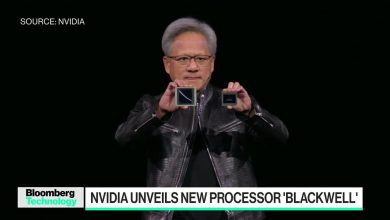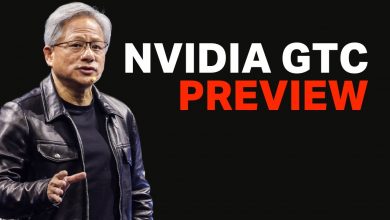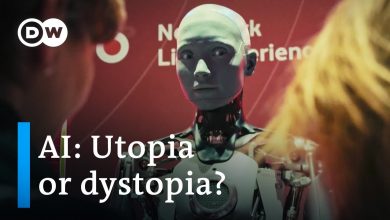How Will AI Reshape the Future of the Film Industry?
The Final Cut: How AI is Rerighting the Script for Hollywood
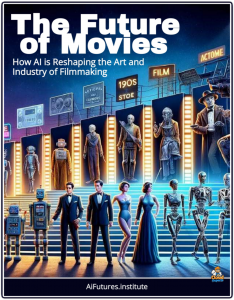 For decades, filmmaking has been a slow-moving giant, an industry of massive budgets, logistical armies, and entrenched hierarchies.
For decades, filmmaking has been a slow-moving giant, an industry of massive budgets, logistical armies, and entrenched hierarchies.
But a new force is ripping through the celluloid, moving from a background tool to the star of the show.
Artificial intelligence, particularly the explosive arrival of generative video models, is no longer just a special effect. It’s poised to become the writer, the cinematographer, the editor, and perhaps even the actor.
This isn’t just another technological shift like the move from film to digital; it’s a fundamental inflection point that questions the very nature of creative authorship and production.
🧠 The AI-Powered Writers’ Room: Pre-Production Reimagined
Before a single camera rolls, AI is already at work. The pre-production phase—once a bottleneck of script revisions, storyboarding, and budgeting—is being radically accelerated.
- Script Analysis & Generation: AI models can analyze a script for pacing, character arcs, and even predict its box-office potential based on market data. For writers, AI acts as a tireless co-writer, suggesting plot twists, generating dialogue options, or overcoming writer’s block.
- Instant Visualization: This is the real game-changer. Tools can now take a script and instantly generate concept art, storyboards, and even rough “animatics” (animated storyboards). A director can visualize an entire scene in minutes, not weeks, experimenting with shot angles, lighting, and mood before committing a single dollar to production.
- Logistics on Autopilot: AI can break down a script into a detailed shooting schedule, budget, and list of required props and locations, streamlining the complex logistics that bog down productions.
🎥 The Virtual Camera: The End of Production as We Know It?
The most profound disruption is happening in production. The buzz around text-to-video models like OpenAI’s Sora isn’t just hype; it’s a preview of a new reality.
These models can generate photorealistic, cinematic video sequences from simple text prompts. The implications are staggering.
- The Democratization of the Blockbuster: An independent filmmaker on a laptop could theoretically generate a sequence with the visual fidelity of a $200 million Marvel movie. Need an aerial shot of a futuristic city in a snowstorm? Or a stampede of woolly mammoths? That no longer requires a visual effects (VFX) army or an expensive location shoot; it just requires the right prompt.
- The “Digital Backlot”: Why fly a crew to the Sahara when AI can generate a perfect, customizable desert? AI-generated environments and “digital extras” could drastically reduce the cost and carbon footprint of filmmaking.
- Digital Actors & De-Aging: AI-driven “deepfake” technology has evolved into sophisticated tools for de-aging actors (as seen in The Irishman) or, more controversially, creating digital replicas of actors.
✂️ The Intelligent Cutting Room: Post-Production on Fast-Forward
Post-production is where AI has already been quietly working for years, but its capabilities are rapidly expanding. This phase is less about replacing creativity and more about augmenting it.
AI tools can now automate the most time-consuming tasks:
- Automated Editing: AI can sift through hours of footage, identify the best takes, and even assemble a “rough cut” of a scene.
- VFX and Cleanup: Repetitive tasks like rotoscoping (isolating an object from its background), object removal (erasing a stray boom mic), and motion tracking are increasingly automated, freeing human VFX artists to focus on more complex creative work.
- Sound and Color: AI can clean up noisy dialogue, generate realistic sound effects, and even suggest sophisticated color grades to match the mood of a scene.
🤖 The Ghost in the Machine: The Human and Ethical Reckoning
This revolution is not without its casualties, and it forces a profound ethical reckoning. This was the central fear driving the 2023 WGA (Writers Guild) and SAG-AFTRA (Screen Actors Guild) strikes.
- For Actors: The primary fear is the “digital replica.” SAG-AFTRA’s new contracts draw a line between “digital replicas” (based on a real actor) and “synthetic performers” (wholly AI-generated). Key questions remain: Who owns an actor’s likeness? How will they be compensated if their digital twin “performs” in a movie years after they were scanned?
- For Writers: The WGA fought to ensure AI cannot be used to write or rewrite “literary material” and cannot be used as source material. The fear is that studios will use AI to generate “good enough” scripts, demoting human writers to low-paid “polishers.”
- Copyright and “AI Slop”: Who owns a film generated by an AI? If an AI is trained on thousands of existing films, is its output a derivative work? Furthermore, as the barrier to creation falls to zero, the industry braces for a potential flood of low-quality “AI slop,” making it harder for true quality to be discovered.
🎬 The New Auteurs: A Final, Thought-Provoking Cut
AI will not, in the short term, replace the need for human vision. It cannot replicate the spark of a truly original idea, the nuance of a lived experience, or the “institutional taste” that defines a great studio.
However, it will fundamentally **reshape the role of the creator**. The director of the future may be less of a hands-on technician and more of a *curator of ideas*—a “prompt engineer” for reality. Their skill will lie in their ability to guide and refine the AI’s output to match their unique vision.
The film industry is on the verge of its most dramatic transformation yet. AI offers unparalleled creative freedom and efficiency, a world where any story, no matter how epic, can be told. But it also presents a deep-seated challenge to the livelihoods of artists and the very definition of human creativity.
The question is no longer *if* AI will reshape cinema, but *how* we will guide it. Will it be a tool that unlocks human potential, or one that automates the soul of storytelling?
